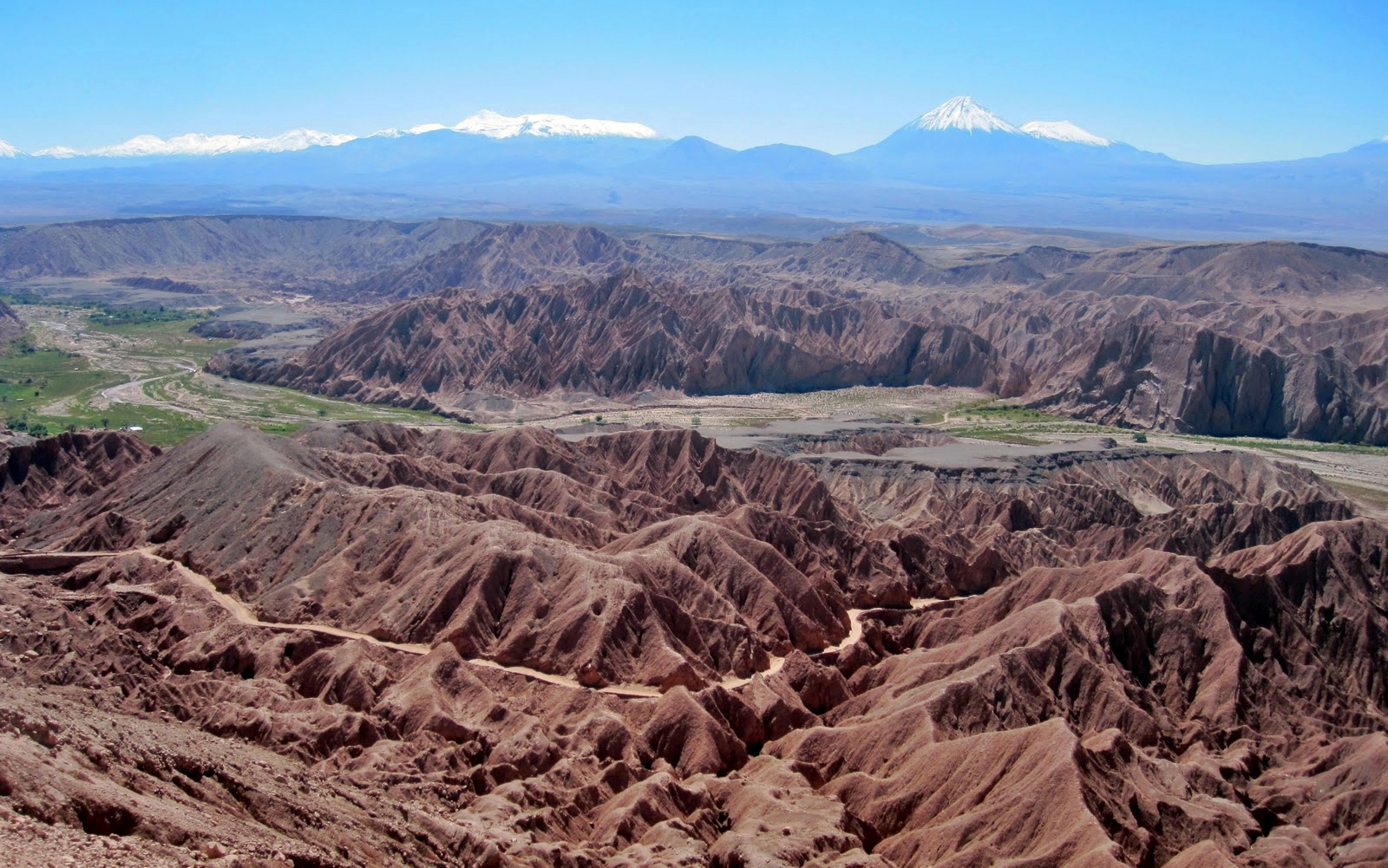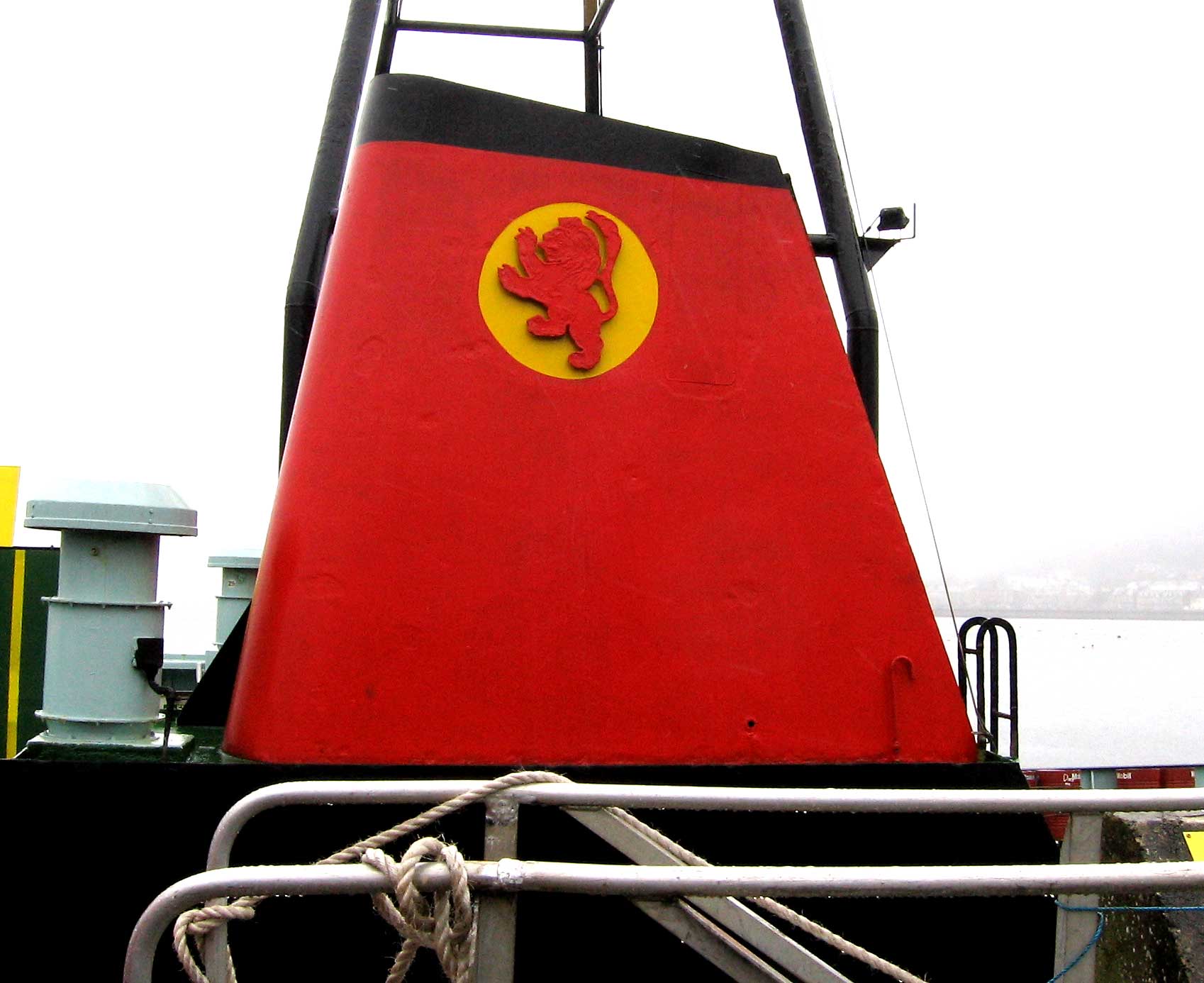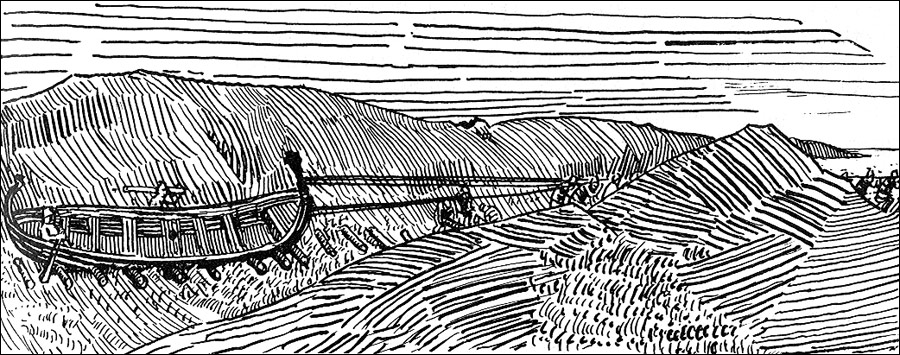|
Kintyre Way
The Kintyre Way is a waymarked footpath through the Kintyre peninsula of Argyll and Bute in Scotland. It runs between Machrihanish near the southern end of the peninsula's west coast, and Tarbert at the northern end of Kintyre where the peninsula is linked to Knapdale, via Campbeltown. The way is long, and is fully waymarked. Additionally there are distance markers at intervals along the route. The route is primarily intended for walkers, but most sections can also be cycled. The Kintyre Way is designated as one of Scotland's Great Trails by NatureScot. It can be linked to another one of the Great Trails via Tarbert, where there is a Caledonian MacBrayne ferry service to Portavadie, which is the start/finish point of the Cowal Way. As of 2018, it was estimated that between one and two thousand people completed the entire route each year. The Kintyre Way ultramarathon has been held annually along parts of the route since 2007. Originally held over a course between Tarber ... [...More Info...] [...Related Items...] OR: [Wikipedia] [Google] [Baidu] |
East Loch Tarbert
East Loch Tarbert ( gd, Loch an Tairbeairt) is a sea loch that lies to the east of Harris in the Outer Hebrides of Scotland. The loch contains several small islands including Sgeotasaigh, Stiughiag, Stiughiag na Leum and Rosaigh and the larger bridged island of Scalpay. The Caledonian MacBrayne ferry from the Isle of Skye to Harris reaches Tarbert via this loch. The village of Tarbert lies on the small isthmus which separates East Loch Tarbert from West Loch Tarbert West Loch Tarbert ( gd, Loch A Siar) is a sea loch that separates the northern and southern parts of Harris in the Outer Hebrides of Scotland. A small isthmus joins these two areas, on which is to be found the village of Tarbert. The loch contai ... and joins North and South Harris. Footnotes Sea lochs of Scotland Lochs of the Outer Hebrides Harris, Outer Hebrides {{WesternIsles-geo-stub ... [...More Info...] [...Related Items...] OR: [Wikipedia] [Google] [Baidu] |
NatureScot
NatureScot ( gd, NàdarAlba), which was formerly known as Scottish Natural Heritage, is an executive non-departmental public body of the Scottish Government responsible for the country's natural heritage, especially its natural, genetic and scenic diversity. It advises the Scottish Government on nature conservation, and acts as a government agent in the delivery of conservation designations, i.e. national nature reserves, local nature reserves, national parks, Site of Special Scientific Interest, Sites of Special Scientific Interest (SSSIs), Special Area of Conservation, Special Areas of Conservation, Special Protection Areas and the national scenic area (Scotland), national scenic areas. It receives annual funding from the Government in the form of Grant in Aid to deliver Government priorities for the natural heritage. NatureScot is the Scottish Government's adviser on all aspects of nature, wildlife management and landscape across Scotland, and also helps the Scottish G ... [...More Info...] [...Related Items...] OR: [Wikipedia] [Google] [Baidu] |
Kintyre Way Walk
Kintyre ( gd, Cinn Tìre, ) is a peninsula in western Scotland, in the southwest of Argyll and Bute. The peninsula stretches about , from the Mull of Kintyre in the south to East and West Loch Tarbert in the north. The region immediately north of Kintyre is known as Knapdale. Kintyre is long and narrow, at no point more than from west coast to east coast, and is less than wide where it connects to Knapdale. The east side of the Kintyre Peninsula is bounded by Kilbrannan Sound, with a number of coastal peaks such as Torr Mor. The central spine of the peninsula is mostly hilly moorland, the highest point being Beinn an Tuirc at .Ordnance Survey. Landranger 1:50,000 Map Sheet 68 (South Kintyre & Cambeltown) The coastal areas and hinterland, however, are rich and fertile. Kintyre has long been a prized area for settlers, including the early Scots who migrated from Ulster to western Scotland and the Vikings or Norsemen who conquered and settled the area just before the start of th ... [...More Info...] [...Related Items...] OR: [Wikipedia] [Google] [Baidu] |
The Adventure Show
''The Adventure Show'' is a sport programme produced by Adventure Show Productions for BBC Sport Scotland, formerly broadcast on BBC Two Scotland and since 2019 on BBC Scotland. It is hosted by Dougie Vipond. In the show's original format, Vipond was supported on screen by reporters Duncan McCallum and Deziree Wilson, while Cameron McNeish contributed a regular mountain walking slot. When the series transferred to BBC Scotland in 2019, the show was reformatted as a weekly two-hour programme branded as ''The Adventure Show Live'' (or ''The Adventure Show Extreme'' for pre-recorded editions) and concentrating on one specific sport in each edition, in contrast to the previous magazine format. The new presenting team comprised Vipond, Patrick Winterton (who serves as lead commentator) and Lauren McCallum. The show's main focus is on "adventure" sports, usually concentrating on one or two main events in each edition. Sports featured include climbing, kayaking, sailing, windsurfing a ... [...More Info...] [...Related Items...] OR: [Wikipedia] [Google] [Baidu] |
BBC Scotland
BBC Scotland (Scottish Gaelic: ''BBC Alba'') is a division of the BBC and the main public broadcaster in Scotland. It is one of the four BBC national regions, together with the BBC English Regions, BBC Cymru Wales and BBC Northern Ireland. Its headquarters are in Glasgow, it employs approximately 1,250 staff as of 2017, to produce 15,000 hours of television and radio programming per year. Some £320 million of licence fee revenue is raised in Scotland, with expenditure on purely local content set to stand at £86 million by 2016–17. The remainder of licence fee revenue raised in the country is spent on networked programmes shown throughout the UK. BBC Scotland operates television channels such as the Scottish variant of BBC One, the BBC Scotland channel and the Gaelic-language channel BBC Alba, and radio stations BBC Radio Scotland and Gaelic-language BBC Radio nan Gaidheal. History The first radio service in Scotland was launched by the British Broadcasting ... [...More Info...] [...Related Items...] OR: [Wikipedia] [Google] [Baidu] |
Tayinloan
Tayinloan (, ) is a village situated on the west coast of the Kintyre peninsula in Argyll and Bute, Scotland. The village has a sub post office, general store and a small hotel (all currently closed), a village hall and a play park. There is a cafe bar situated beside the ferry car park which also offers self-catering or bed and breakfast accommodation. The nearest towns are Campbeltown ( south) and Tarbert ( north). A ferry service runs between the village and Ardminish on the Isle of Gigha. The A83 road runs through the village, as does a long-distance footpath, the Kintyre Way, a walk of some , stretching between Tarbert, Loch Fyne and Southend at the Mull of Kintyre. Killean House near Tayinloan was built in the 1880s by John James Burnet Sir John James Burnet (31 May 1857 – 2 July 1938) was a Scottish Edwardian architect who was noted for a number of prominent buildings in Glasgow and London. He was the son of the architect John Burnet, and later went into par ... [...More Info...] [...Related Items...] OR: [Wikipedia] [Google] [Baidu] |
Ultramarathon
An ultramarathon, also called ultra distance or ultra running, is any footrace longer than the traditional marathon length of . Various distances are raced competitively, from the shortest common ultramarathon of to over . 50k and 100k are both World Athletics record distances, but some races are among the oldest and most prestigious events, especially in North America. Around 100 miles is typically the longest course distance raced in under 24 hours but there are also longer multi-day races of or more, sometimes raced in stages with breaks for sleep. While some ultras are road races, many take place on trails, leading to a large overlap with the sports of trail running and mountain running. Overview There are two main types of ultramarathon events: those that cover a specified distance or route, and those that last for a predetermined period of time (with the winner covering the most distance in that time). The most common distances are , , , and , although many races have ... [...More Info...] [...Related Items...] OR: [Wikipedia] [Google] [Baidu] |
Cowal Way
The Loch Lomond and Cowal Way is a waymarked footpath through the Cowal peninsula, in Argyll and Bute, between Portavadie on Cowal and Inveruglas on Loch Lomond side. It was formerly known as the Cowal Way, but was renamed in December 2018 to reflect the fact that half of the route lies with the Loch Lomond and The Trossachs National Park. The way is long, and is suitable for both walkers and mountain bikers. Much of the route is also suitable for experienced horseriders, although in some places steps, narrow footbridges and gates may restrict access for horses. A review to identify these obstacles and suggest alternative routes and/or remedial measures was undertaken in 2016. The route was first established in 2000, and is managed by the Colintraive and Glendaruel Development Trust. It was renamed in 2018 to in order to increase usage of the trail, as the Trust considered that Loch Lomond had higher brand recognition in the target markets. Since 2016 the trail has been lis ... [...More Info...] [...Related Items...] OR: [Wikipedia] [Google] [Baidu] |
Portavadie
Portavadie ( gd, Port a' Mhadaidh) is a village on the shores of Loch Fyne on the west coast of the Cowal peninsula in Argyll and Bute, Scottish Highlands. The Portavadie complex was built by the then Scottish Office for the purpose of constructing concrete platforms for extraction of oil from the North Sea. However, the intention was soon overtaken by acceptance that steel platforms were the future for the oil industry in Scotland. Despite suggestions to turn the complex into a holiday village, it lay redundant until in the mid-1980s the enclosed port was used by a local fish farm company. A further report in the Dunoon Observer and Argyllshire Standard, says that the derelict "village", known as Polphail, was sold to a forestry company who plan to demolish the buildings and build new houses. It remains in situ currently. Portavadie Marina In late 2009 the marina was used for the first time to tie up yachts for the Scottish series by the Clyde Cruising Club, won by Nigel Big ... [...More Info...] [...Related Items...] OR: [Wikipedia] [Google] [Baidu] |
Caledonian MacBrayne
Caledonian MacBrayne ( gd, Caledonian Mac a' Bhriuthainn), usually shortened to CalMac, is the major operator of passenger and vehicle ferries, and ferry services, between the mainland of Scotland and 22 of the major islands on Scotland's west coast. Since 2006, the company's official name has been CalMac Ferries Ltd, although it still operates as Caledonian MacBrayne. In 2006, it also became a subsidiary of holding company David MacBrayne, which is owned by the Scottish Government. History David MacBrayne MacBrayne's, initially known as David Hutcheson & Co., began in 1851 as a private steamship operator when G. and J. Burns, operators of the largest of the Clyde fleets, decided to concentrate on coastal and transatlantic services and handed control of their river and Highland steamers to a new company in which Hutcheson, their manager of these services, became senior partner. One of the other partners was David MacBrayne (1817-1907), nephew of Messrs. Burns. In 1878, the ... [...More Info...] [...Related Items...] OR: [Wikipedia] [Google] [Baidu] |
Trail Blazing
Trail blazing or way marking is the practice of marking paths in outdoor recreational areas with signs or markings that follow each other at certain, though not necessarily exactly defined, distances and mark the direction of the trail. A blaze in the beginning meant "a mark made on a tree by slashing the bark" (''The Canadian Oxford Dictionary''). Originally a waymark was "any conspicuous object which serves as a guide to travellers; a landmark" (''Oxford English Dictionary''). There are several ways of marking trails, including paint, carvings, affixed markers, posts, flagging, cairns, and crosses, with paint being the most widely used. Types of signage Paint A painted marking of a consistent shape or shapes (often rectangular), dimension and colour or combination of colours is used along the trail route. The system by which blazes are used to signify turns and endpoints in trails (see below) strongly favors the use of paint blazes. European countries usually use systems ... [...More Info...] [...Related Items...] OR: [Wikipedia] [Google] [Baidu] |
Kintyre
Kintyre ( gd, Cinn Tìre, ) is a peninsula in western Scotland, in the southwest of Argyll and Bute. The peninsula stretches about , from the Mull of Kintyre in the south to East and West Loch Tarbert in the north. The region immediately north of Kintyre is known as Knapdale. Kintyre is long and narrow, at no point more than from west coast to east coast, and is less than wide where it connects to Knapdale. The east side of the Kintyre Peninsula is bounded by Kilbrannan Sound, with a number of coastal peaks such as Torr Mor. The central spine of the peninsula is mostly hilly moorland, the highest point being Beinn an Tuirc at .Ordnance Survey. Landranger 1:50,000 Map Sheet 68 (South Kintyre & Cambeltown) The coastal areas and hinterland, however, are rich and fertile. Kintyre has long been a prized area for settlers, including the early Scots who migrated from Ulster to western Scotland and the Vikings or Norsemen who conquered and settled the area just before the start of t ... [...More Info...] [...Related Items...] OR: [Wikipedia] [Google] [Baidu] |







